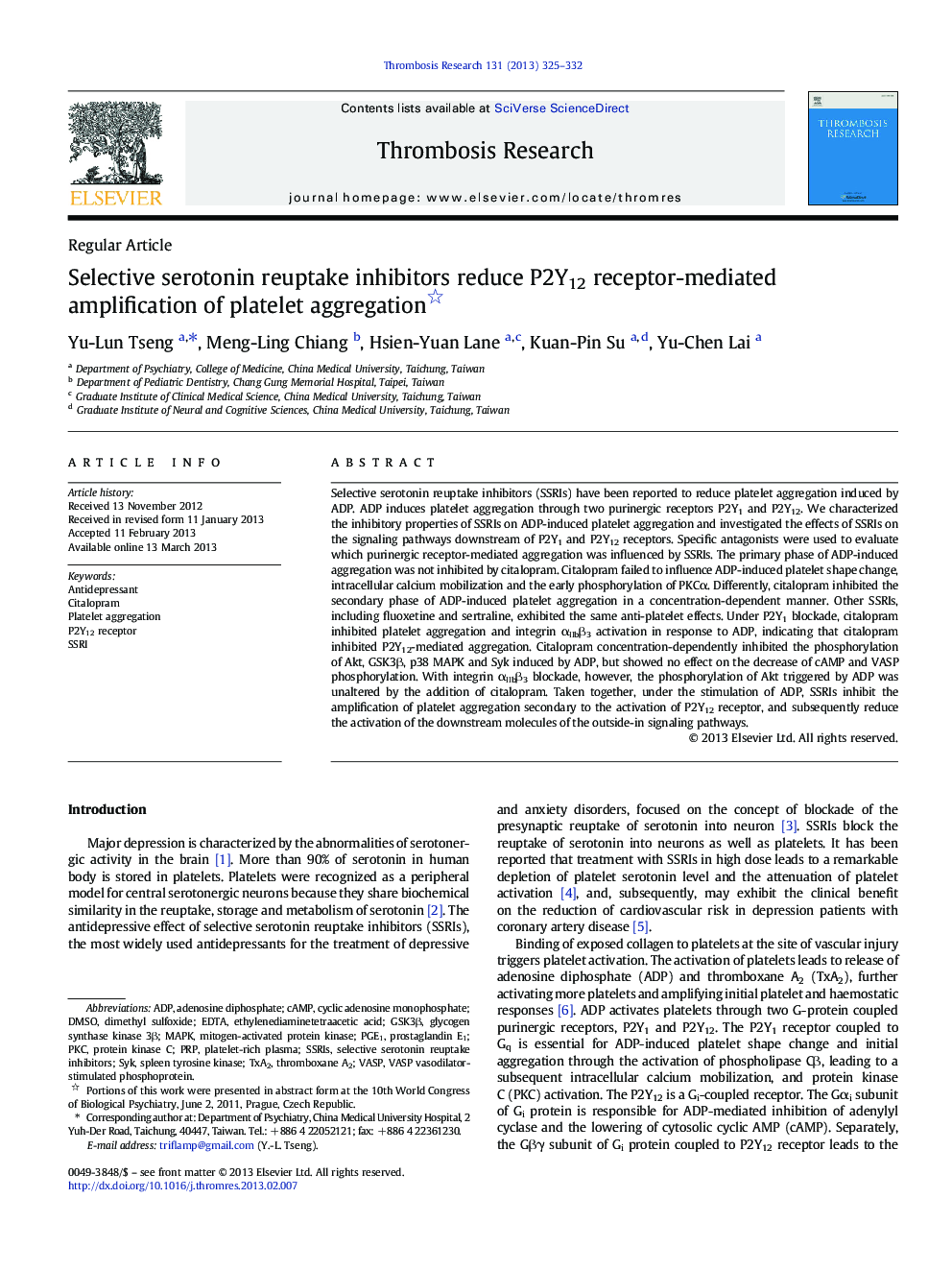| Article ID | Journal | Published Year | Pages | File Type |
|---|---|---|---|---|
| 3027217 | Thrombosis Research | 2013 | 8 Pages |
Selective serotonin reuptake inhibitors (SSRIs) have been reported to reduce platelet aggregation induced by ADP. ADP induces platelet aggregation through two purinergic receptors P2Y1 and P2Y12. We characterized the inhibitory properties of SSRIs on ADP-induced platelet aggregation and investigated the effects of SSRIs on the signaling pathways downstream of P2Y1 and P2Y12 receptors. Specific antagonists were used to evaluate which purinergic receptor-mediated aggregation was influenced by SSRIs. The primary phase of ADP-induced aggregation was not inhibited by citalopram. Citalopram failed to influence ADP-induced platelet shape change, intracellular calcium mobilization and the early phosphorylation of PKCα. Differently, citalopram inhibited the secondary phase of ADP-induced platelet aggregation in a concentration-dependent manner. Other SSRIs, including fluoxetine and sertraline, exhibited the same anti-platelet effects. Under P2Y1 blockade, citalopram inhibited platelet aggregation and integrin αIIbβ3 activation in response to ADP, indicating that citalopram inhibited P2Y12-mediated aggregation. Citalopram concentration-dependently inhibited the phosphorylation of Akt, GSK3β, p38 MAPK and Syk induced by ADP, but showed no effect on the decrease of cAMP and VASP phosphorylation. With integrin αIIbβ3 blockade, however, the phosphorylation of Akt triggered by ADP was unaltered by the addition of citalopram. Taken together, under the stimulation of ADP, SSRIs inhibit the amplification of platelet aggregation secondary to the activation of P2Y12 receptor, and subsequently reduce the activation of the downstream molecules of the outside-in signaling pathways.
